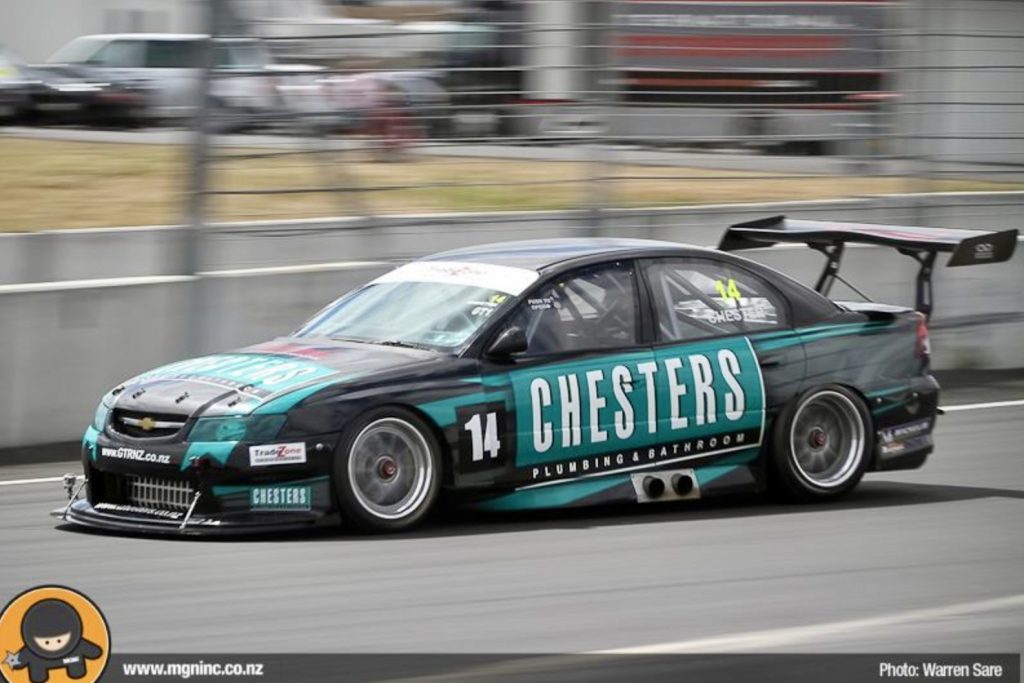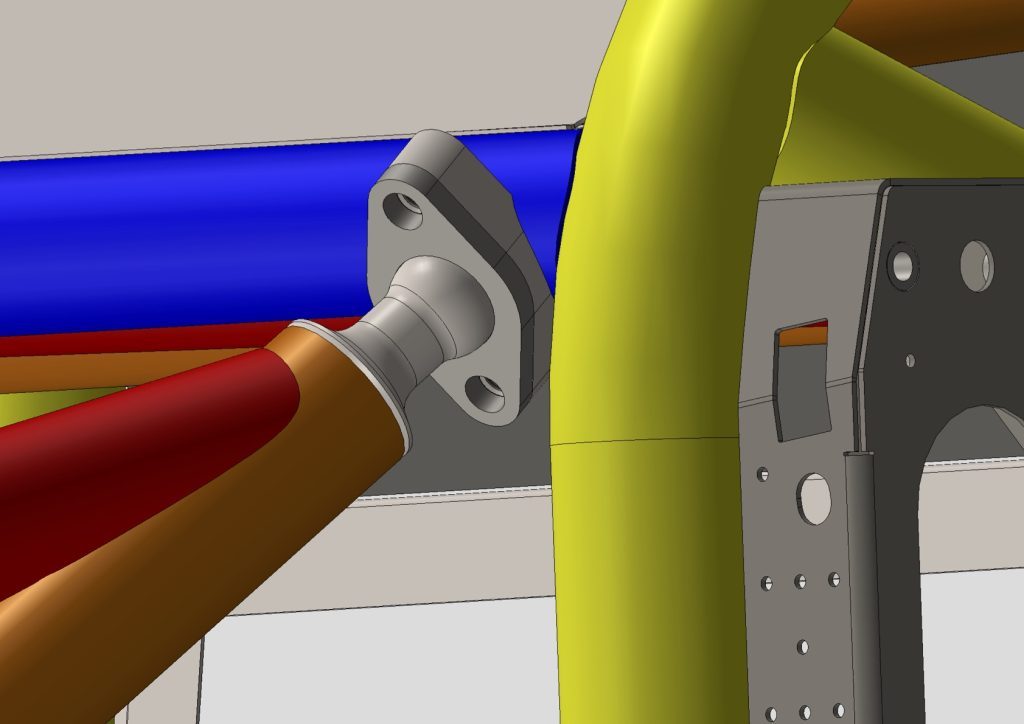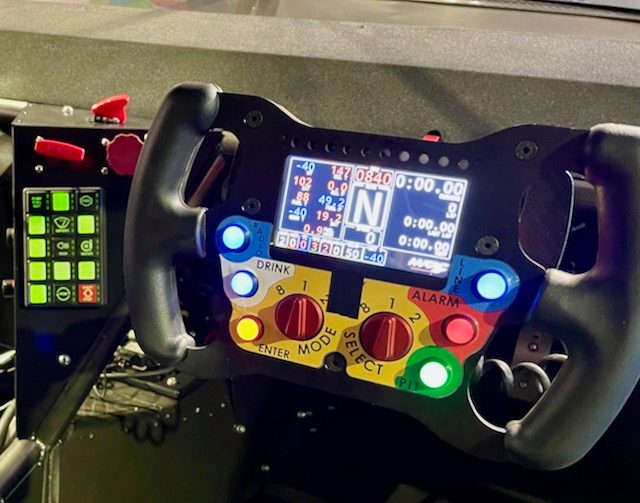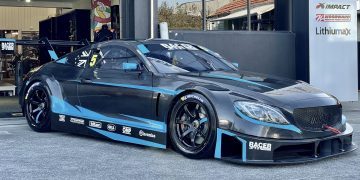Nick Chester makes his long-awaited return to motor racing at Hampton Downs on the 22nd of April in the NIERDC 1-hour race, where he will debut the all-new MARC GT car.

Chester is best known for his exploits in the insanely powerful 800 BHP, Chesters Plumbing, VE Holden Commodore sports sedan in the NIERDC endurance series, and GTRNZ sports sedan series, so driving the new MARC GT with a lot less Horsepower but more aero should be no issue for him.
” I’m a bit rusty, and it will obviously take me a little while to adapt to a car with a lot more aero than I am used to,” says Chester. “Unfortunately, I won’t get the chance to test drive the car before the Friday practice day at Hampton Downs as I had already booked a family holiday and only get back to New Zealand on the Thursday before race weekend.
“However, Gene Rollinson is due to give the car a shakedown run, along with the Pace innovations engineers, next week, so I should be able to concentrate on getting up to speed in the car without worrying about the car’s setup. “

The new MARC GT, inspired by the sleek Mercedes C63 Coupe, replaces the original MARC 1 V8 Ford Focus sports sedan first introduced into Australian Motor racing in 2013 by Ryan Mcleod’s Racer Industries collaboration with Pace Innovations Pty Ltd, who designed and manufactured the car.
The MARC 1 V8 Focus, one of which is owned by Peter Williams Racing here in New Zealand and raced with success by Southland driver Jordan Michels in the SIERDC 1-Hour races, has been hugely popular in Australia, however, a lack of original Ford Focus Body panels, and a wish to update the entry-level Marc Cars offerings, lead to the design of the new MARC GT.
Australian Sports Sedan enthusiast Geoff Taunton, who purchased Marc Cars Australia from its founder Ryan McLeod 3 years ago, races the company’s flagship MARC 2 V8 Ford Mustang. He approached Pace Innovations Principal and noted design engineer Paul Ceprnich about designing a replacement entry-level car for the Australian sports sedan market as the A$400,000 Marc 2 Mustang was too expensive for most of the sports sedan competitors.
The brief was; that a turn-key race car had to be under A$300,000, including GST, and have an engine and powertrain life of a minimum of 60 hours. One further caveat was that the driver’s cockpit had to easily accommodate a 6′ 3″ tall driver and a similarly sized passenger in order for the car owner to take sponsors and friends on hot laps in relative comfort!
Ceprnich’s engineering team came back with a revolutionary module chassis design, with demountable front and rear chassis sub-frames as the basis for the new MARC GT concept, incorporating a cost-effective Ls3 6.2 litre GM 560BHP crate engine, mated to a custom designed Holinger transaxle, that would fill the brief. Thus the new car was conceived at least from a design point of view.
Taunton’s issue was that he had to pre-sell the MARC GT concept to the Australian Sports Sedan customer base, no easy task when no car existed other than computer-generated renderings; still, he was successful in selling three cars; however, the cost of developing and testing a prototype car proved to be a step too far for Taunton with the effect of Covid on his principal business.
Meanwhile, Ceprnich had been in discussions with NZ businessman Mark Petch, the founding father of the New Zealand V8 SuperTourer Series, about Pace designing and building a prototype GEN2 V8 SuperTourer, for endurance car racing in New Zealand. Petch liked the concept of the new MARC GT and agreed to fund the prototype in exchange for having the worldwide rights to sell MARC GT cars outside of Australia.
Petch, also the publisher of Velocity News and NZ Autocar magazine, said he was excited to be the owner of the very first MARC GT car to finally run in a race after days of testing of the original prototype, which was crashed at Queensland raceway late last year in the hands of regular Pace innovations test driver Luke Youlden in a freak accident.
“Fortunately, the crash damage was confined to the demountable front subframe and crash box, which were always going to be updated regardless of the crash,” said Petch.
“The prototype proved that the unique spherical ball connection of the front subframe to the firewall of the chassis main centre ‘cockpit’ section of the modular chassis was much stronger than the front subframe, and the fact that all 8 connection points remained completely intact, after sustaining such a serious crash, is a real credit to Cepei’s [Paul Ceprnich] novel spherical design.
“Pace was able to rebuild the front of the car with the new production front subframe and crash box structure using the original undamaged centre section, a huge saving in cost associated with such a significant crash.
“They say ‘every cloud has a silver lining’, and so it proved in this instance. Sceptics of Pace Innovations’ modular chassis design have been proved well and truly wrong. It has also proved that in the advent of a serious crash, you can repair the car either at the race track or back in your own workshop, depending on the seriousness of the crash, without having to send the chassis back to Pace Innovations in Australia. That’s a big plus when selling cars to an international marketplace,” says Petch.

The MARC GT features, as standard, a dry-sumped Ls3 engine developing 560 BHP @ 6,200 RPM and 530Ftlbs @ 5,200 RPM of torque and weighs in at 1150 kilograms. It sits on 290x680x18″ Dunlop Supercar spec tyres mounted on semi-forged centre-lock 11×18″ Australian-made KOYA wheels, housing Brembo 380mm diameter front rotors and six-pot billet callipers.
The 6-speed Holinger transaxle also house’s the 5.5″ triple plate Tilton clutch, as well as the starter motor, and alternator, giving the car a remarkable 53% rear weight bias with just 30 litres of fuel in the 120 litres fuel cell, which is located behind the transaxle in its own chrome moly demountable subframe. The two-way Quantum dampers used extensively by Ginetta Cars were also custom designed by Pace Innovations.

It incorporates the latest M150 Motec ECU, Bosch Mk5.2 ABS, traction control, paddle shift, electronic power steering, programmable electric water pump, etc., and sells for A$300,000, up from the initial A$275,000 with the effects of rampant inflation. Racer Products are the New Zealand agents for Marc Cars Australia.
















